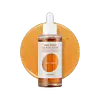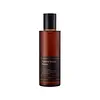What's inside
What's inside
 Key Ingredients
Key Ingredients

 Benefits
Benefits

 Concerns
Concerns

No concerns
 Ingredients Side-by-side
Ingredients Side-by-side

Sophora Angustifolia Root Extract
Skin ConditioningWater
Skin ConditioningButylene Glycol
HumectantPropanediol
SolventHouttuynia Cordata Extract
Skin ConditioningGlycerin
Humectant1,2-Hexanediol
Skin ConditioningNiacinamide
SmoothingPanthenol
Skin ConditioningCoptis Japonica Rhizome Extract
AntimicrobialCarbomer
Emulsion StabilisingTromethamine
BufferingAmmonium Acryloyldimethyltaurate/Vp Copolymer
Malt Extract
Skin ProtectingAllantoin
Skin ConditioningEthylhexylglycerin
Skin ConditioningAdenosine
Skin ConditioningCitrus Unshiu Peel Extract
MaskingXanthan Gum
EmulsifyingDisodium EDTA
Polyquaternium-51
Skin ConditioningMelia Azadirachta Flower Extract
Skin ConditioningMelia Azadirachta Leaf Extract
Skin ConditioningPolyglutamic Acid
Skin ConditioningSodium Hyaluronate
HumectantBetaine
HumectantCoccinia Indica Fruit Extract
Skin ConditioningCorallina Officinalis Extract
Skin ConditioningSophora Angustifolia Root Extract, Water, Butylene Glycol, Propanediol, Houttuynia Cordata Extract, Glycerin, 1,2-Hexanediol, Niacinamide, Panthenol, Coptis Japonica Rhizome Extract, Carbomer, Tromethamine, Ammonium Acryloyldimethyltaurate/Vp Copolymer, Malt Extract, Allantoin, Ethylhexylglycerin, Adenosine, Citrus Unshiu Peel Extract, Xanthan Gum, Disodium EDTA, Polyquaternium-51, Melia Azadirachta Flower Extract, Melia Azadirachta Leaf Extract, Polyglutamic Acid, Sodium Hyaluronate, Betaine, Coccinia Indica Fruit Extract, Corallina Officinalis Extract
Panax Ginseng Root Extract
EmollientGlycerin
HumectantPropanediol
Solvent1,2-Hexanediol
Skin ConditioningButylene Glycol
HumectantNiacinamide
SmoothingWater
Skin ConditioningSimethicone
EmollientPanthenol
Skin ConditioningGelidium Cartilagineum Extract
Skin ProtectingLaminaria Japonica Extract
Skin ProtectingHizikia Fusiforme Extract
Skin ConditioningAscophyllum Nodosum Extract
Skin ConditioningAscorbic Acid Polypeptide
AntioxidantLactobacillus Ferment
Skin ConditioningGlycyrrhiza Glabra Root Extract
BleachingDextrin
AbsorbentCentella Asiatica Extract
CleansingScutellaria Baicalensis Root Extract
AstringentGlycine
BufferingPolygonum Cuspidatum Root Extract
AntioxidantSerine
MaskingGlutamic Acid
HumectantSesamum Indicum Seed Extract
Skin ConditioningSophora Flavescens Root Extract
AntioxidantCamellia Sinensis Leaf Extract
AntimicrobialCimicifuga Racemosa Root Extract
AntimicrobialMorus Alba Bark Extract
Skin ConditioningPaeonia Lactiflora Root Extract
Skin ConditioningPhellinus Linteus Extract
Skin ConditioningAngelica Gigas Root Extract
Skin ConditioningPolygonum Multiflorum Root Extract
Skin ConditioningAspartic Acid
MaskingLeucine
Skin ConditioningRosmarinus Officinalis Leaf Extract
AntimicrobialChamomilla Recutita Flower Extract
MaskingPaeonia Suffruticosa Root Extract
Skin ProtectingAlanine
MaskingLysine
Skin ConditioningArginine
MaskingTyrosine
MaskingPhenylalanine
MaskingValine
MaskingPancratium Maritimum Extract
BleachingThreonine
Proline
Skin ConditioningIsoleucine
Skin ConditioningHistidine
HumectantMethionine
Skin ConditioningCysteine
AntioxidantCellulose Gum
Emulsion StabilisingAmmonium Acryloyldimethyltaurate/Vp Copolymer
Sodium Polyacryloyldimethyl Taurate
Emulsion StabilisingHydrogenated Polydecene
EmollientEthylhexylglycerin
Skin ConditioningAdenosine
Skin ConditioningTrideceth-10
CleansingTheobroma Cacao Extract
Skin ConditioningDisodium EDTA
T-Butyl Alcohol
PerfumingCarbomer
Emulsion StabilisingPolyglutamic Acid
Skin ConditioningPvm/Ma Copolymer
Emulsion StabilisingBetaine
HumectantPanax Ginseng Root Extract, Glycerin, Propanediol, 1,2-Hexanediol, Butylene Glycol, Niacinamide, Water, Simethicone, Panthenol, Gelidium Cartilagineum Extract, Laminaria Japonica Extract, Hizikia Fusiforme Extract, Ascophyllum Nodosum Extract, Ascorbic Acid Polypeptide, Lactobacillus Ferment, Glycyrrhiza Glabra Root Extract, Dextrin, Centella Asiatica Extract, Scutellaria Baicalensis Root Extract, Glycine, Polygonum Cuspidatum Root Extract, Serine, Glutamic Acid, Sesamum Indicum Seed Extract, Sophora Flavescens Root Extract, Camellia Sinensis Leaf Extract, Cimicifuga Racemosa Root Extract, Morus Alba Bark Extract, Paeonia Lactiflora Root Extract, Phellinus Linteus Extract, Angelica Gigas Root Extract, Polygonum Multiflorum Root Extract, Aspartic Acid, Leucine, Rosmarinus Officinalis Leaf Extract, Chamomilla Recutita Flower Extract, Paeonia Suffruticosa Root Extract, Alanine, Lysine, Arginine, Tyrosine, Phenylalanine, Valine, Pancratium Maritimum Extract, Threonine, Proline, Isoleucine, Histidine, Methionine, Cysteine, Cellulose Gum, Ammonium Acryloyldimethyltaurate/Vp Copolymer, Sodium Polyacryloyldimethyl Taurate, Hydrogenated Polydecene, Ethylhexylglycerin, Adenosine, Trideceth-10, Theobroma Cacao Extract, Disodium EDTA, T-Butyl Alcohol, Carbomer, Polyglutamic Acid, Pvm/Ma Copolymer, Betaine
 Reviews
Reviews

Ingredients Explained
These ingredients are found in both products.
Ingredients higher up in an ingredient list are typically present in a larger amount.
1,2-Hexanediol is a synthetic liquid and another multi-functional powerhouse.
It is a:
- Humectant, drawing moisture into the skin
- Emollient, helping to soften skin
- Solvent, dispersing and stabilizing formulas
- Preservative booster, enhancing the antimicrobial activity of other preservatives
Adenosine is in every living organism. It is one of four components in nucleic acids that helps store our DNA.
Adenosine has many benefits when used. These benefits include hydrating the skin, smoothing skin, and reducing wrinkles. Once applied, adenosine increases collagen production. It also helps with improving firmness and tissue repair.
Studies have found adenosine may also help with wound healing.
In skincare products, Adenosine is usually derived from yeast.
Learn more about AdenosineAmmonium Acryloyldimethyltaurate/Vp Copolymer (let's call it AAVC for short) is a synthetically created polymer. It's used as a film-forming agent and used to thicken the consistency of products.
AAVC is able to increase the consistency and viscosity of products due to its large molecule size. It also prevents ingredients from separating.
Betaine is a common humectant (a substance that promotes retention of moisture). It's known to be gentle on the skin and can help balance hydration.
This ingredient is best for improving hydration and soothing irritated skin. Studies also show it helps even out skin tone.
Fun fact: Betaine is naturally created in the skin and body. The kind found within cosmetic products can be either plant-derived or synthetic.
Another name for betaine is trimethylglycine.
Learn more about BetaineButylene Glycol (or BG) is used within cosmetic products for a few different reasons:
Overall, Butylene Glycol is a safe and well-rounded ingredient that works well with other ingredients.
Though this ingredient works well with most skin types, some people with sensitive skin may experience a reaction such as allergic rashes, closed comedones, or itchiness.
Learn more about Butylene GlycolCarbomer is a polymer of acrylic acid. Its main role is to create a gel consistency.
A high amount of carbomer can cause pilling or balling up of products. Don't worry, most products contain 1% or less of carbomer.
Disodium EDTA plays a role in making products more stable by aiding other preservatives.
It is a chelating agent, meaning it neutralizes metal ions that may be found in a product.
Disodium EDTA is a salt of edetic acid and is found to be safe in cosmetic ingredients.
Learn more about Disodium EDTAEthylhexylglycerin (we can't pronounce this either) is commonly used as a preservative and skin softener. It is derived from glyceryl.
You might see Ethylhexylglycerin often paired with other preservatives such as phenoxyethanol. Ethylhexylglycerin has been found to increase the effectiveness of these other preservatives.
Glycerin is already naturally found in your skin. It helps moisturize and protect your skin.
A study from 2016 found glycerin to be more effective as a humectant than AHAs and hyaluronic acid.
As a humectant, it helps the skin stay hydrated by pulling moisture to your skin. The low molecular weight of glycerin allows it to pull moisture into the deeper layers of your skin.
Hydrated skin improves your skin barrier; Your skin barrier helps protect against irritants and bacteria.
Glycerin has also been found to have antimicrobial and antiviral properties. Due to these properties, glycerin is often used in wound and burn treatments.
In cosmetics, glycerin is usually derived from plants such as soybean or palm. However, it can also be sourced from animals, such as tallow or animal fat.
This ingredient is organic, colorless, odorless, and non-toxic.
Glycerin is the name for this ingredient in American English. British English uses Glycerol/Glycerine.
Learn more about GlycerinNiacinamide is a multitasking form of vitamin B3 that strengthens the skin barrier, reduces pores and dark spots, regulates oil, and improves signs of aging.
And the best part? It's gentle and well-tolerated by most skin types, including sensitive and reactive skin.
You might have heard of "niacin flush", or the reddening of skin that causes itchiness. Niacinamide has not been found to cause this.
In very rare cases, some individuals may not be able to tolerate niacinamide at all or experience an allergic reaction to it.
If you are experiencing flaking, irritation, and dryness with this ingredient, be sure to double check all your products as this ingredient can be found in all categories of skincare.
When incorporating niacinamide into your routine, look out for concentration amounts. Typically, 5% niacinamide provides benefits such as fading dark spots. However, if you have sensitive skin, it is better to begin with a smaller concentration.
When you apply niacinamide to your skin, your body converts it into nicotinamide adenine dinucleotide (NAD). NAD is an essential coenzyme that is already found in your cells as "fuel" and powers countless biological processes.
In your skin, NAD helps repair cell damage, produce new healthy cells, support collagen production, strengthen the skin barrier, and fight environmental stressors (like UV and pollution).
Our natural NAD levels start to decline with age, leading to slower skin repair, visible aging, and a weaker skin barrier. By providing your skin niacinamide, you're recharging your skin's NAD levels. This leads to stronger, healthier, and younger looking skin.
Another name for vitamin B3 is nicotinamide. This vitamin is water-soluble and our bodies don't store it. We obtain Vitamin B3 from either food or skincare. Meat, fish, wheat, yeast, and leafy greens contain vitamin B3.
The type of niacinamide used in skincare is synthetically created.
Learn more about NiacinamidePanthenol is a common ingredient that helps hydrate and soothe the skin. It is found naturally in our skin and hair.
There are two forms of panthenol: D and L.
D-panthenol is also known as dexpanthenol. Most cosmetics use dexpanthenol or a mixture of D and L-panthenol.
Panthenol is famous due to its ability to go deeper into the skin's layers. Using this ingredient has numerous pros (and no cons):
Like hyaluronic acid, panthenol is a humectant. Humectants are able to bind and hold large amounts of water to keep skin hydrated.
This ingredient works well for wound healing. It works by increasing tissue in the wound and helps close open wounds.
Once oxidized, panthenol converts to pantothenic acid. Panthothenic acid is found in all living cells.
This ingredient is also referred to as pro-vitamin B5.
Learn more about PanthenolPolyglutamic Acid is made up many glutamic acids chained together. It is created from bacterial fermentation.
This ingredient is an effective skin hydrator and may help speed up wound healing. As a humectant, it draws and holds water to the skin. This ingredient is often compared to hyaluronic acid or glycerin. Similarly to hyaluronic acid, it can vary in molecular weights. This means polyglutamic acid is capable of bringing hydration to lower levels of the skin.
Fun fact: Polyglutamic Acid is found in the Japanese food, natto. It is also being used in cancer treatment studies.
Learn more about Polyglutamic AcidPropanediol is an all-star ingredient. It softens, hydrates, and smooths the skin.
It’s often used to:
Propanediol is not likely to cause sensitivity and considered safe to use. It is derived from corn or petroleum with a clear color and no scent.
Learn more about PropanediolWater. It's the most common cosmetic ingredient of all. You'll usually see it at the top of ingredient lists, meaning that it makes up the largest part of the product.
So why is it so popular? Water most often acts as a solvent - this means that it helps dissolve other ingredients into the formulation.
You'll also recognize water as that liquid we all need to stay alive. If you see this, drink a glass of water. Stay hydrated!
Learn more about Water